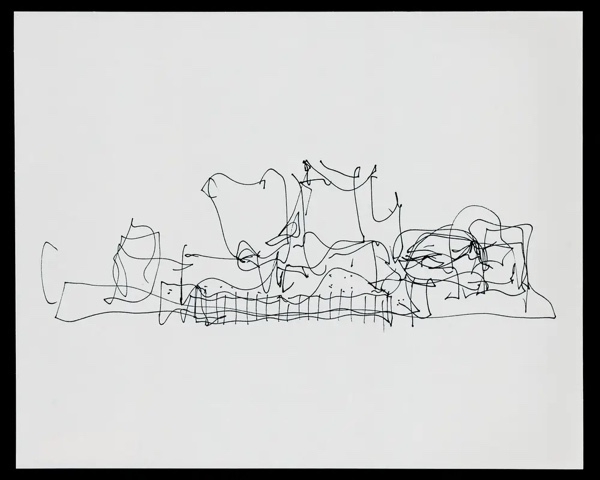Explore the creative process from paper to product
From a Miro board to Google Docs. From Pinterest to your saved Instagram inspiration. Voice memos, AI Agents, mails-to-self and complex digital structures to form a second brain. There is so much creative effort saved and externalized in these tools and apps.
But walk into any random café, library or communal space and you’ll see them: the architect with her sketchbook, the writer scribbling ideas on napkins, the musician noting chords on the back of a receipt.
Why though? Why do so many creative professionals still consciously choose pen and paper when the digital world seems so much faster and more convenient?
The secret of physical notes
I will investigate how creative professionals develop their innovative work. From interior designers and composers to street artists, chefs, and stand-up comedians. While digital tools and Personal Knowledge Management (PKM) systems often dominate discussions about creativity, many creatives still rely on physical notebooks and analog note-taking as their primary creative foundation. Is there something almost magical happening in that transition from mind to paper? Is it a mysterious connection we don’t have when we type on keyboards or tap on screens?
Research actually backs this up. A groundbreaking study shows that the physical interaction with paper provides unique episodic and spatial information that helps our brains process and retrieve information more effectively. When you write on real paper, your brain creates a richer memory map compared to digital alternatives.
My personal quest
This project started from a very personal place. I found myself struggling with focus, constantly switching between apps, feeling like my creative process was fragmented across dozens of digital tools. The question became: How can I work with more focus and flow and should I bring paper back into my creative process?
I was talking to a creative designer about this and we got onto the topic of how many creative professionals use paper notebooks to collect and curate their ideas and inspiration. This brought me onto the path to figure out how they do this, what their process looks like.
What this project explores
I want to explore the mindset behind this creative process. What is that crucial moment when pen meets paper and thoughts flow from mind to heart, hands, and onto the page. This goes beyond traditional frameworks like bullet journaling or the Cornell method. How does a simple sketch or scribble evolve into extraordinary work, much like Frank Gehry’s abstract doodles like these…

…eventually became the magnificent Walt Disney Concert Hall.

Through interviews and insights gathered from creative professionals, I want to uncover
- Which analog methods do creative professionals actually use?
- How do they transition from physical notes to finished work?
- What rituals and tools support their creative flow?
- How do they process and connect their ideas (“connecting the dots”)?
I want to interview at least 20 - 25 professionals from different creative domains about their work, their process and their tooling. In addition to the interviews, I will photograph their tools and notes where possible. These interviews can also serve as a source for a podcast series, the photos as exhibition material and I will share my journey through a Substack newsletter.
In this neverending push to digitize everything, what can we learn from these creatives and their analog methods? How can it help others to unlock the creative thinking in their own profession and find new ways to access, curate, and connect their own knowledge?
Want to learn more? Email me at frank@frankmeeuwsen.com.